

Mary Bauermeister, hailed as the "Grandmother of the Fluxus Movement," was married to Karlheinz Stockhausen, a prominent German composer celebrated as the "Father of Electronic Music" and one of the most significant composers of the 20th and early 21st centuries.
In Germany, I had the privilege of meeting Mary Bauermeister and spent a week at her studio. That week remains one of the most unforgettable memories of my life. At 78, she was still spirited and imposing. Clad always in white, her beauty defied the marks of time. Tall and with a resonant voice, she exuded a benevolent and magnanimous aura akin to a maternal earth goddess, influencing everyone around her, including me.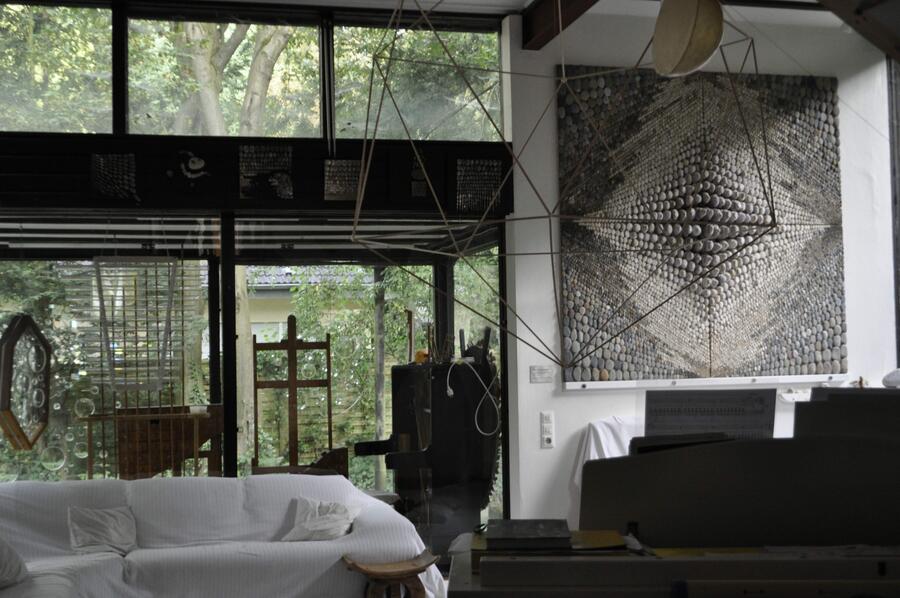
Mary’s studio, located in Forsbach near Cologne, was an art space and garden she designed and built herself. It was a modern structure of black steel and glass, set against a lush garden filled with diverse plants. The garden featured two wooden cabins for guest accommodation, a tower brimming with various objects and clothing, and a wooden structure seemingly meant for ceremonies. A massive bronze gong and a large prism sculpture were also present. A unique fallen tree, still vibrant, bore cards on its branches—a remnant of a storm, preserved by Mary as an integral part of her artistic garden. The garden was replete with art pieces and artistic objects, such as a carved stone segment, a goat skull on a tall post, and a Japanese doll in a glass house. This garden emanated a profound sense of mysticism.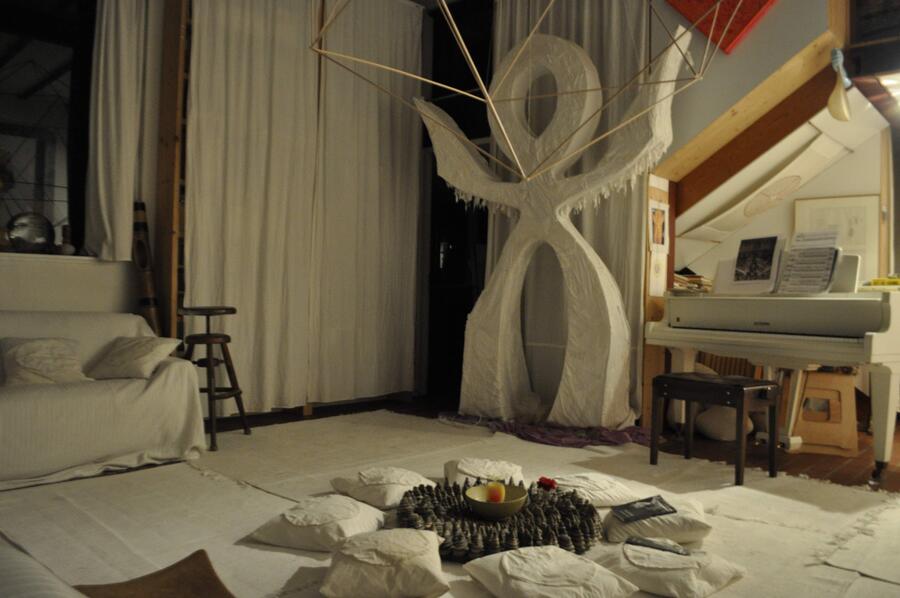
For decades, this place has been a gathering spot for artists and art enthusiasts from around the world. Mary hosted monthly art gatherings where people discussed art, recited poetry, and performed music. This practice of using her studio as an artistic catalyst has been a lifelong tradition. In her youth, she offered her studio to experimental artists and alternative creators who were then marginalized by the mainstream art world, facilitating the birth of Fluxus through the clash and exchange of new artistic ideas.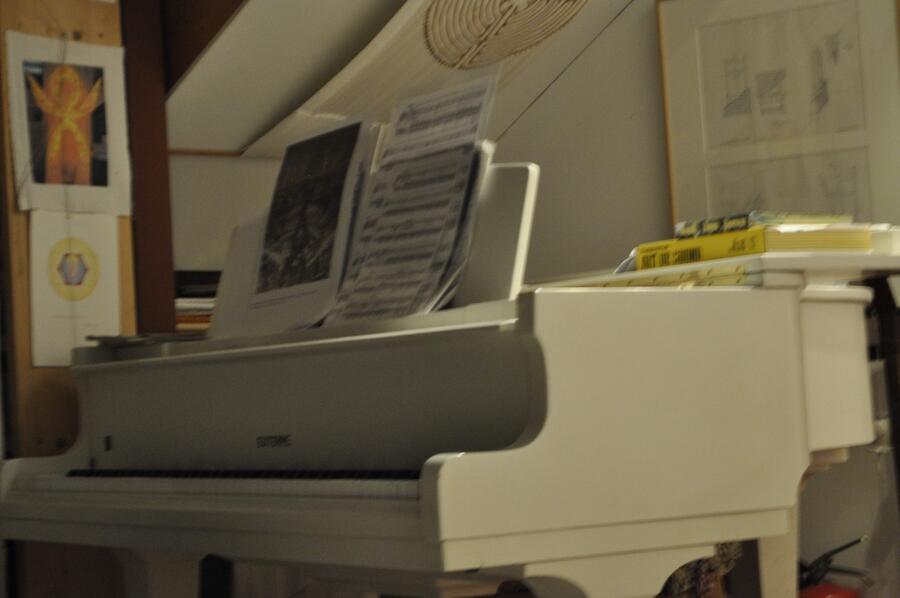
In the summer of 2013, I first visited Mary's Forsbach studio. Unprepared, I brought only pen and paper, intending to create in the simplest manner. A four-color pen from China and white paper from Cologne's train station were my only tools.
During my stay, I drew at a large wooden table each morning in serene silence. When resting, I stood by the tall glass windows adorned with Mary’s lens works, which distorted the view outside through various convex and concave lenses. These lenses invited the external world into her art, creating a composite reality. Observing her optical work, a prism structure, I marveled at the fantastical world of colored light within. Sunlight through the prism cast ever-changing rainbow spots on the walls and objects, imbuing ordinary life with a divine glow.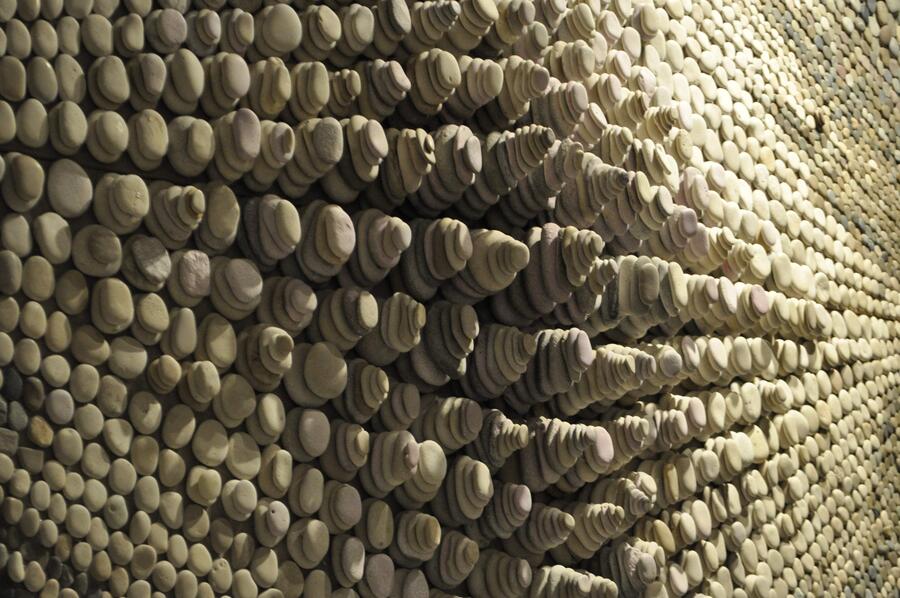
Possibly inspired by the mysticism of Mary’s garden, my drawings began to blur the lines between animals, plants, and humans, resulting in unique forms. This series preceded my "Daydreams" work. Mary’s enthusiastic response, repeatedly exclaiming “Super” in German, left a deep impression on me. Her genuine praise and the way she showcased my drawings to everyone, including her staff, deeply moved and warmed me.
Mary and I didn’t converse much due to her hearing issues and my accented English, but art bridged the communication gap. Through my drawings, she understood my inner world.
Within days, we forged an emotional connection transcending age, nationality, and language. Before my departure, she introduced my work to the director of the Women’s Museum in Bonn, driving me there through serene, rain-soaked roads—a transcendent experience.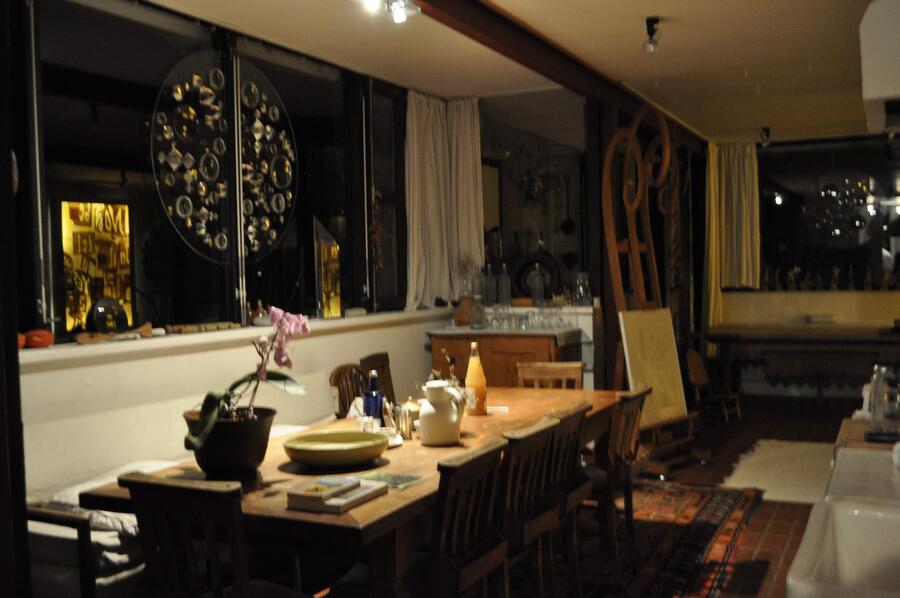
Mary later made copies of my drawings, advising me to treasure and preserve my originals. Her embrace as we crossed the street to the print shop was a rare moment of intimate connection, enveloping me in warmth and affection.
On my last day, she showed me more of her works at her private museum and cherished a portrait I drew of her, featuring her signature spiral motif symbolizing the galaxy, which she proudly displayed.
Mary drove me to the train station, introducing me to everyone as “a distinguished artist” from China. Her white-coated figure waving from the platform remains etched in my memory.
In 2015, I returned to her rural museum residence for a month to prepare for my solo exhibition in Germany. During this time, I learned more about her life. Despite a painful back injury, she displayed immense willpower, climbing stairs unaided and caring for her intellectually disabled daughter.
One snowy morning, she led me to a serene mountain spot where she meditated in the sunlight. Mary dedicated a room in her museum for my works, regularly introducing them to visiting gallery owners and collectors.
Mary gave me a collaborative painting, inviting me to add my work. She also introduced me to a gallery for her solo exhibition. She gifted me a signed catalog of her works, which I treasure.
At my exhibition's opening, Mary drove from Cologne to Wiesbaden. Her presence and speech were a tremendous support and inspiration. When I saw her again in 2018, despite her cancer, she remained resilient and joyous, showing me her latest work incorporating my drawing. Our final meeting and photograph together are precious memories.
When Mary passed away on March 5, 2023, I felt an initial calmness that soon gave way to tears. I revisited our photos and decided to write a tribute to her. Reading her German texts in her gift catalog, I translated and understood her life story, from childhood through her marriage with Stockhausen to her later years. This article, published in a magazine, is my tribute to her, preserving her legacy in my words.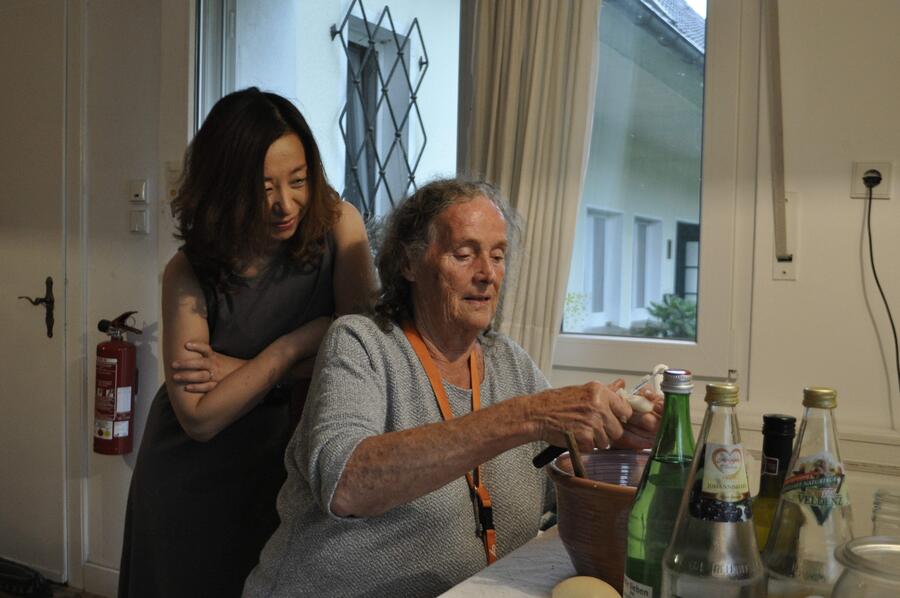
During my stay at Mary’s studio, I met my husband, Roland von der Emden, a German designer keen on new technologies. Influenced by him, I began exploring new artistic methods. My "Daydream" series, born from pen drawings at Mary’s studio and reimagined through DeepDream, garnered attention as AI art was still novel in China. Reflecting on this decade-long journey, I realize that without meeting Mary and Roland, my artistic path would have been very different.
A nostalgic person, I often reminisce about Mary, her presence vividly alive in my memories. As silicon-based life gradually replaces carbon-based life, I ponder the fleeting significance of our endeavors, yet remain committed to my art. If Mary were alive, I’d send her my completed works first, knowing it would make her happy. Now, I can only thank her in spirit and dedicate my catalog to her memory.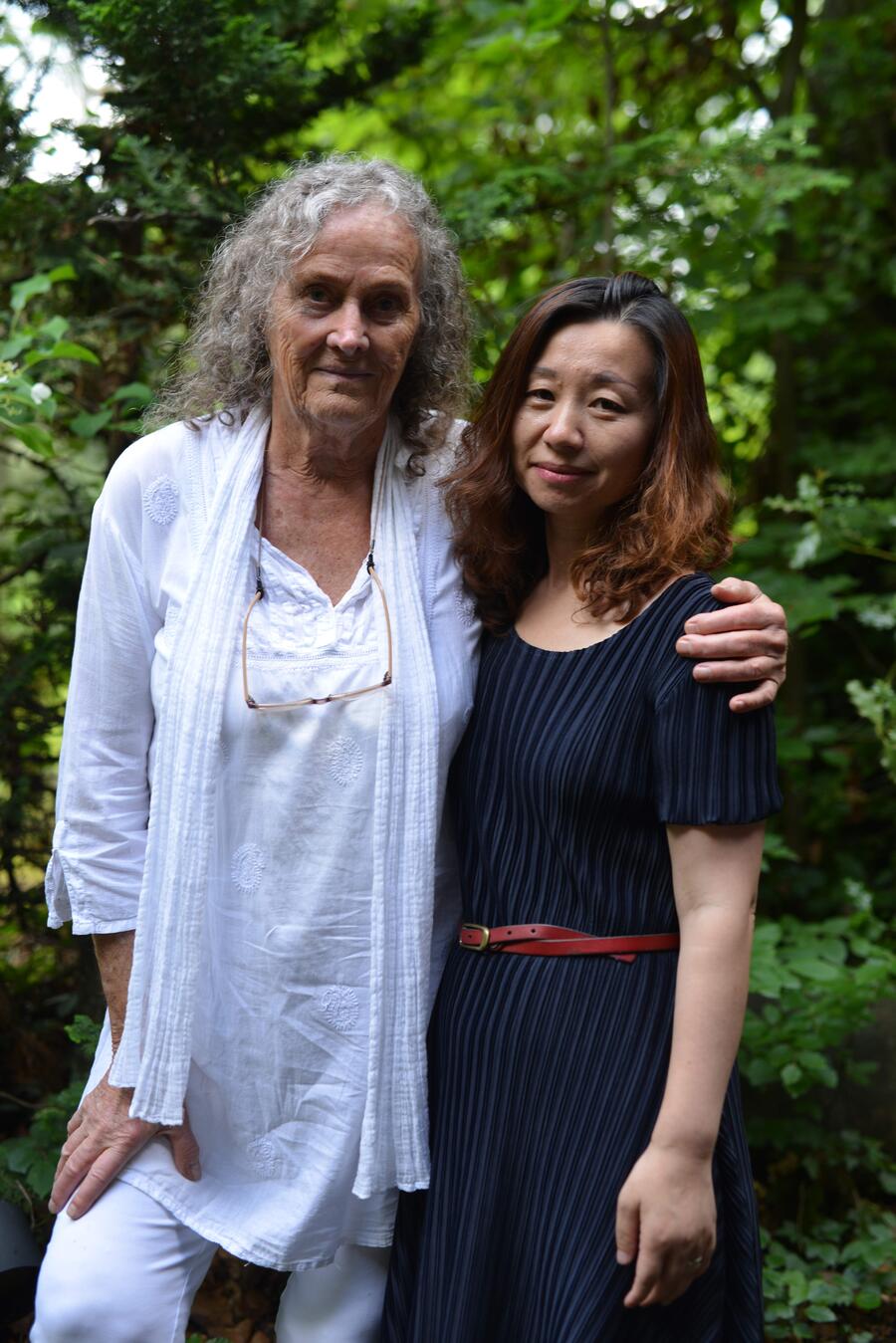
May 29, 2024